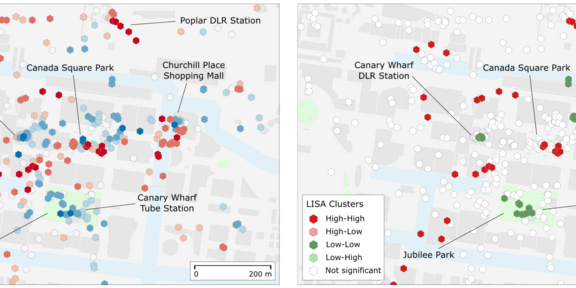New paper on spatial filtering

Our member Jun.-Prof. Dr René Westerholt has published a new article in the journal Environment and Planning B. The article proposes a new method called Spatial Amplifier Filtering, which is related to Moran eigenvector filtering. The method enables the highlighting of spatial structures in heterogeneous data sets. It is based on the inclusion of certain eigenvectors of a spatial weights matrix in a regression model. The application of this method can be seen as a pre-processing step to separate different types of spatially correlated components in a dataset before subsequent analyses. For this purpose, three different types of so-called spatial amplifiers are proposed, each consisting of different subsets of eigenvectors of the weights matrix. These amplifiers can emphasise either positive or negative spatial autocorrelation or spatial structuring in general. In this way, it is possible to make desired spatial structures more visible, especially in spatially highly mixed data sets, with the focus here being on data from social media. These data usually originate from a complex genesis. Spatial statistical analyses, however, reduce them to geometric conceptions of geographical space that are reduced to location and time. Accordingly, the empirical part of the article first shows why georeferenced social media data are difficult to handle from the point of view of spatial analysis, which motivates the need for the proposed method. Then, the amplifier filtering method is introduced and applied to two datasets: a census dataset from Brazil and Twitter data from London. The results obtained show that the method is able to amplify existing spatial structures and reduce potentially disturbing spatial random patterns and other confounding factors. This facilitates the interpretation of the Twitter data used in particular. While the analysis of the unfiltered Twitter data with established methods provides little insight into possible spatial structures in the tweets, the filtered data offers a much clearer picture with distinguishable clusters. Furthermore, the method also provides insights into the internal irregularity of spatial clusters and thus complements the toolbox for investigating spatial heterogeneity.
Westerholt, R. (2021): Emphasising spatial structure in geosocial media data using spatial amplifier filtering. Environment and Planning B: Urban Analytics and City Science, volume and issue pending. DOI: 10.1177/2399808320987235.
